
New imaging reveals the secrets of cellular traffic control
Texas A&M University researchers work with experts from EMBL Imaging Centre to uncover how molecules navigate the nuclear pore complex.
SCIENCE & TECHNOLOGY2025
science-technology
Showing results out of

Texas A&M University researchers work with experts from EMBL Imaging Centre to uncover how molecules navigate the nuclear pore complex.
SCIENCE & TECHNOLOGY2025
science-technology
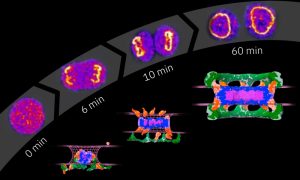
EMBL Heidelberg researchers and their collaborators reveal how the nuclear pore complex, one of the biggest molecular machines in eukaryotic cells, is assembled one protein at a time.
SCIENCE & TECHNOLOGY2023
sciencescience-technology
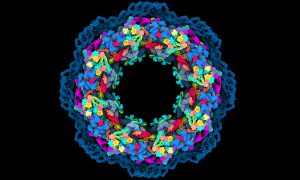
Scientists have solved several mysteries around the structure and function of a true molecular giant: the human nuclear pore complex. They created the most complete model of the complex thanks to combining the program AlphaFold2 with cryo-electron tomography, integrative modelling, molecular…
SCIENCE & TECHNOLOGY2022
sciencescience-technology
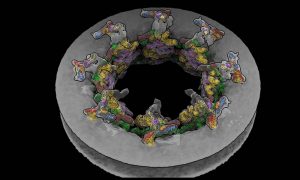
EMBL Hamburg’s Kosinski Group, the Beck Laboratory at the Max Planck Institute of Biophysics, and colleagues at EMBL Heidelberg recorded the nuclear pore complex contracting in living cells. They visualised the movement with an unprecedented level of detail with help of new software called…
SCIENCE & TECHNOLOGY2021
sciencescience-technology

As perfect as a summer night sky, these nuclear pores help calibrate a customised super-resolution microscope in EMBL’s Ries group.
SCIENCE & TECHNOLOGY2021
picture-of-the-weekscience-technology
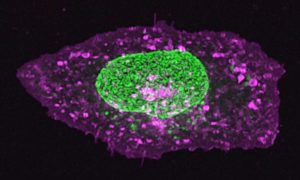
The nucleus of this cell fluoresces in bright green thanks to GFP-labelled nucleoporin proteins. EMBL scientists use engineered nucleoporins as 3D reference standards to improve super-resolution microscopy.
SCIENCE & TECHNOLOGY2020
picture-of-the-weekscience-technology
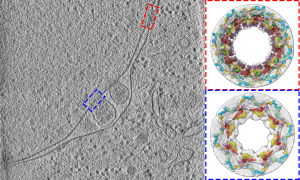
Scientists from the Beck group have studied the 3D structure of nuclear pores in budding yeast. They show how the architecture of the nuclear pore complex differs inside cells compared to its form observed in vitro studies.
SCIENCE & TECHNOLOGY2020
sciencescience-technology
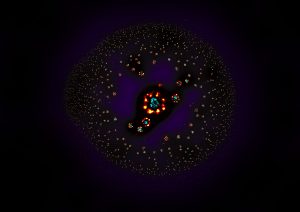
EMBL researchers have published two new studies involving the nuclear pore complex
SCIENCE & TECHNOLOGY2019
sciencescience-technology
It’s a parent’s nightmare: opening a Lego set and being faced with 500 pieces, but no instructions on how to assemble them into the majestic castle shown on the box. Thanks to a new approach by scientists at the European Molecular Biology Laboratory (EMBL) in Heidelberg, Germany,…
SCIENCE & TECHNOLOGY2013
sciencescience-technology
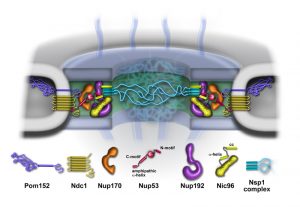
A fungus that lives at extremely high temperatures could help understand structures within our own cells. Scientists at the European Molecular Biology Laboratory (EMBL) and Heidelberg University, both in Heidelberg, Germany, were the first to sequence and analyse the genome of a heat-loving fungus,…
SCIENCE & TECHNOLOGY2011
sciencescience-technology
No results found